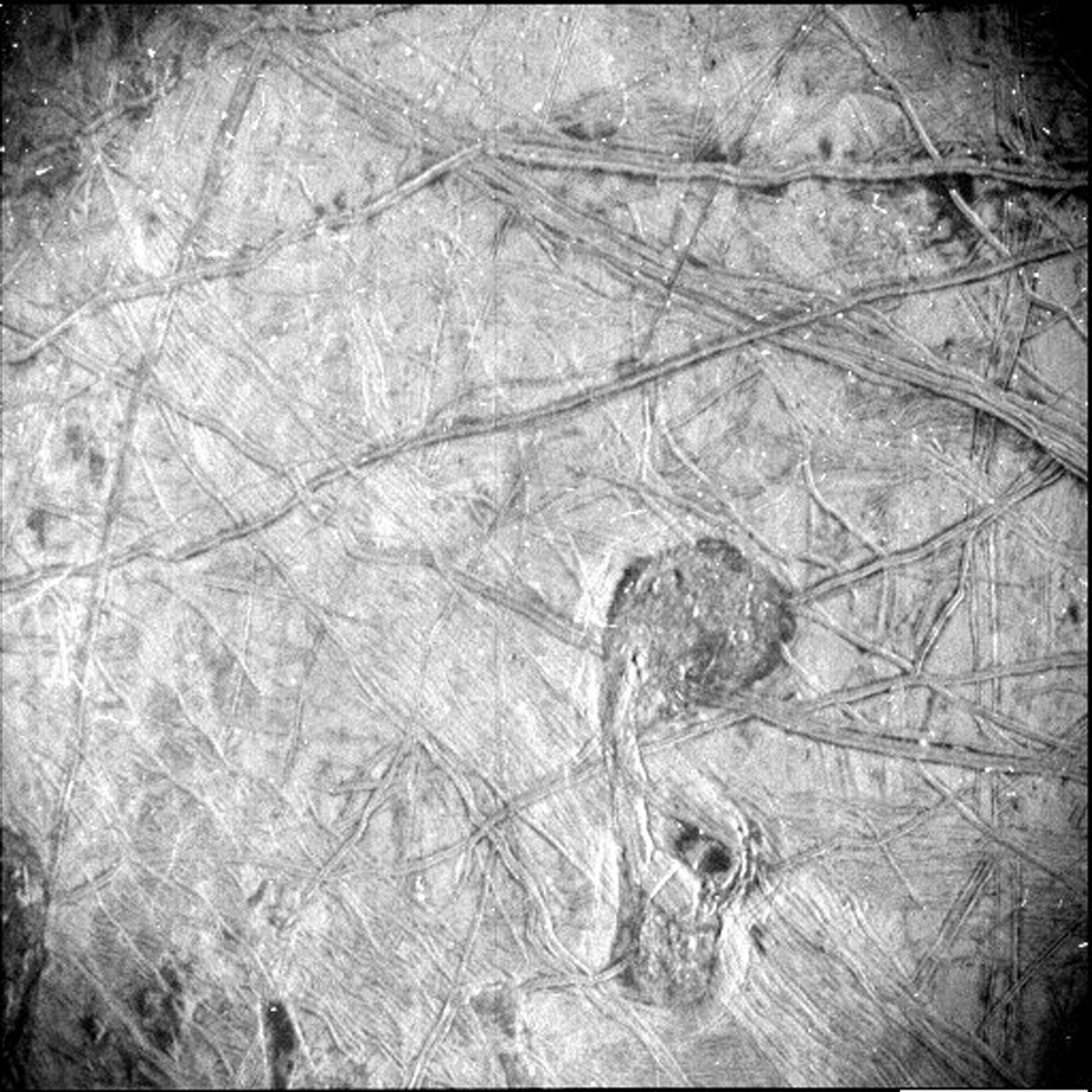Juno mission spies feature looking like a musical note on Europa’s icy surface

Europa's icy crust and its intriguing features appear in an image taken by Juno's star camera.
By Ashley Strickland, CNN
A NASA spacecraft recently flew by Jupiter’s moon Europa, and one of its cameras spied fascinating features on the icy crust of the ocean world.
The Juno spacecraft, which has been orbiting Jupiter since 2016, made its closest approach yet to Europa on September 29, flying within 219 miles (352 kilometers) of its icy surface. The mission captured some of the highest-resolution images ever taken of Europa’s ice shell in over two decades.
Juno’s Stellar Reference Unit, a star camera that keeps the spacecraft oriented, captured an image that covers a fractured region of about 93 miles (150 kilometers) by 125 miles (201 kilometers).
Fine grooves and double ridges can be seen streaking across the surface. The double ridges are actually pairs of long parallel lines that suggest elevated areas in the ice.
There are also dark stains that indicate something from beneath the ice shell is erupting on the surface.
A surface feature resembles a musical quarter note below the center of the image, and it stretches 42 miles (68 kilometers) from north to south and 23 miles (37 kilometers) east to west.
White dots correlate with energetic particles from the moon’s radiation environment.
Juno’s star camera took the black-and-white image from 256 miles (412 kilometers) away while zipping by at about 54,000 miles per hour (86,905 kilometers per hour).
The camera was designed to operate in low-light conditions, hence the amount of detail captured even though that part of the moon’s surface was in nighttime and only dimly lit by sun reflecting off Jupiter’s cloud tops.
The camera has also been used to spot shallow lightning in Jupiter’s atmosphere and take images of the giant planet’s rings.
“This image is unlocking an incredible level of detail in a region not previously imaged at such resolution and under such revealing illumination conditions,” said Heidi Becker, lead coinvestigator for the star camera, in a statement.
“The team’s use of a star-tracker camera for science is a great example of Juno’s groundbreaking capabilities. These features are so intriguing. Understanding how they formed — and how they connect to Europa’s history — informs us about internal and external processes shaping the icy crust.”
All of Juno’s instruments collected data during the Europa flyby and a pass over Jupiter’s poles made just 7 1/2 hours later. The analysis of the data will be shared in the coming months.
The spacecraft also gathered data about Europa’s interior, where a salty ocean is thought to exist.
The ice shell that makes up the moon’s surface is between 10 and 15 miles (16 and 24 kilometers) thick, and the ocean it likely sits atop is estimated to be 40 to 100 miles (64 to 161 kilometers) deep.
The data and images captured by Juno could help inform NASA’s Europa Clipper mission, which will launch in 2024 to perform a dedicated series of 50 flybys around the moon after arriving in 2030. Europa Clipper may be able to help scientists determine whether the interior ocean exists and if the moon — one of many orbiting Jupiter — has the potential to be habitable for life.
Clipper will eventually transition from an altitude of 1,700 miles (2,736 kilometers) to just 16 miles (26 kilometers) above the moon’s surface. While Juno has largely focused on studying Jupiter, Clipper will be dedicated to observing Europa.
INTERACTIVE: Explore where the search for life is unfolding in our solar system
Juno is in the extended part of its mission, which was set to end in 2021. The spacecraft is now focused on performing flybys of some of Jupiter’s moons, and its mission is set to end in 2025.
“Juno started out completely focused on Jupiter. The team is really excited that during our extended mission, we expanded our investigation to include three of the four Galilean satellites and Jupiter’s rings,” said Scott Bolton, Juno principal investigator at the Southwest Research Institute in San Antonio, in a statement.
“With this flyby of Europa, Juno has now seen close-ups of two of the most interesting moons of Jupiter,” he said, also referring to Ganymede, “and their ice shell crusts look very different from each other. In 2023, Io, the most volcanic body in the solar system, will join the club.”
The-CNN-Wire
™ & © 2022 Cable News Network, Inc., a Warner Bros. Discovery Company. All rights reserved.


